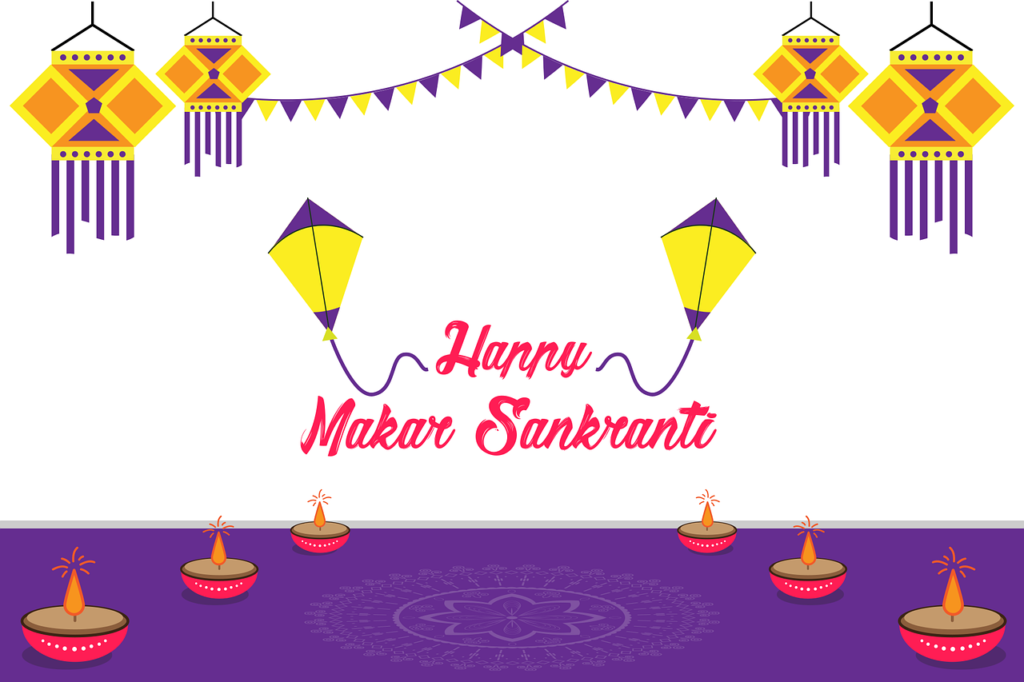Makar Sankranti, the joyous festival marking the sun’s northward journey, isn’t just one celebration in India; it’s a kaleidoscope of vibrant customs and traditions as diverse as the land itself. From the fiery bonfires of Punjab to the sweet Pongal feasts of Tamil Nadu, each region celebrates this harvest festival with its unique flair and a special name. This festival, typically observed on January 14th, holds immense cultural and religious significance across the country.

Why is Makar Sankranti Celebrated?
The celebration of Makar Sankranti is deeply rooted in Hindu traditions and has strong ties to agrarian practices. The festival is dedicated to the sun god, Surya, and symbolizes the end of the winter solstice. According to Hindu mythology, on this day, the sun begins its northward journey, and daylight starts to increase, bringing warmth and prosperity to the land.
Makar Sankranti not only signifies the end of winter and the onset of longer days but also celebrates the harvest season, bringing joy and festivity to people’s lives. The farmers express gratitude for the successful harvest. The festival is a way of thanking the sun for its vital role in agriculture and acknowledging the interconnectedness of nature and human life. So, let’s embark on a journey across India to discover the many faces of Makar Sankranti!
How is Makar Sankranti Celebrated Across Different States in India?
Makar Sankranti is celebrated with great enthusiasm and diverse customs across various states in India. Each region has its unique way of observing the festival, reflecting the rich cultural diversity of the country.
- Uttar Pradesh and Bihar:
- In these northern states, the festival is known as Khichdi Parv or Til Sankranti.
- People take holy dips in the Ganges and other rivers, offering prayers to the sun god.
- Khichdi, a mixture of rice and lentils, is prepared and distributed as prasad (holy offering).
- Gujarat and Maharashtra:
- Makar Sankranti is synonymous with the International Kite Festival in Gujarat.
- People engage in friendly kite-flying competitions, and the sky is adorned with colorful kites of various shapes and sizes.
- Special dishes like til ladoo (sesame seed sweets) and undhiyu (a mixed vegetable curry) are prepared.
- Tamil Nadu:
- Pongal, a four-day harvest festival, is celebrated in Tamil Nadu during Makar Sankranti.
- The festival involves cooking the newly harvested rice in milk, and the dish is offered to the sun god before being consumed.
- Assam:
- In Assam, Makar Sankranti is celebrated as Bhogali Bihu or Magh Bihu.
- People build makeshift huts, known as Meji, and gather around bonfires, singing and dancing.
- Traditional Assamese dishes like pitha (rice cakes) are prepared.
- Karnataka:
- Sankranti is marked by the exchange of ellu-bella (a mixture of sesame seeds, jaggery, coconut, and peanuts) between friends and family.
- The festival is also associated with a traditional game called “Yellu Ammana,” where sesame seeds are scattered, and participants try to find a hidden object.
- Andhra Pradesh and Telangana:
- In these southern states, Makar Sankranti is celebrated with fervor and is known as Pedda Panduga in Andhra Pradesh and Makara Sankranthi in Telangana.
- The festival is marked by the preparation of special dishes, including pulagam (a dish made with newly harvested rice).
- Bhogi, the first day of the festival, involves the ritual burning of old and unwanted items symbolizing the destruction of the old and the start of a new life.
- On the main day, people decorate their homes with colorful rangoli, fly kites, and exchange til-gul sweets with friends and family members.
- A significant tradition is the offering of prayers to Sun God, expressing gratitude for a bountiful harvest and seeking blessings for prosperity.
Makar Sankranti truly showcases the diversity of traditions and customs across India, as each state adds its unique flavors to the celebration while sharing common themes of gratitude, renewal, and the onset of a season of abundance. The festival brings people together, transcending regional boundaries, and highlights the rich cultural tapestry that defines the country.



